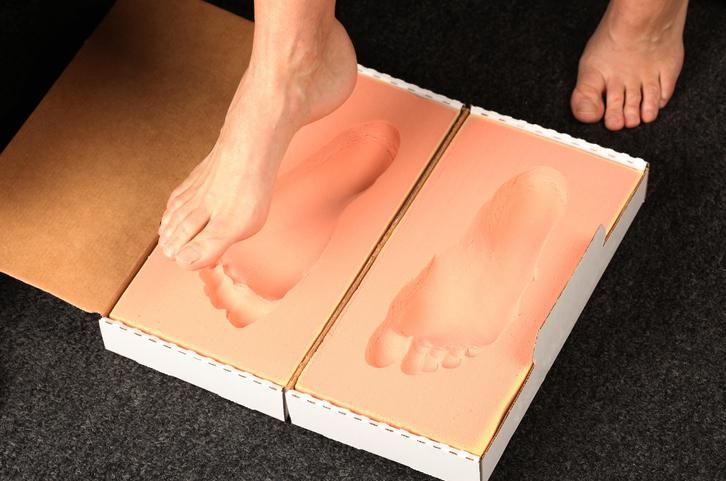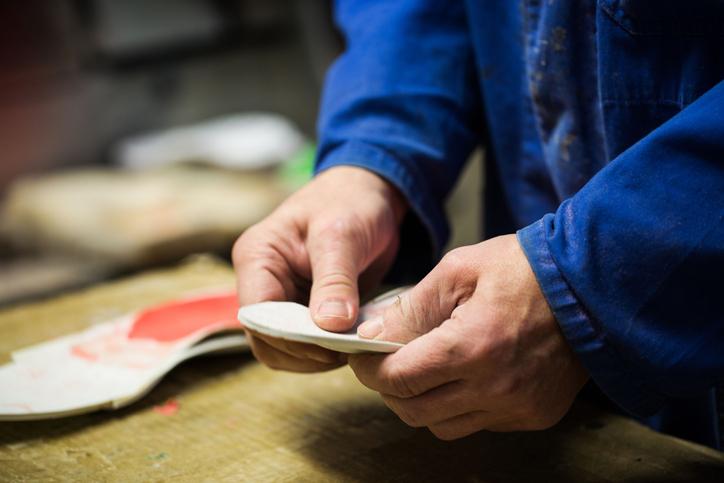Custom orthotics

What is custom orthotics?
Custom orthotics are special tailored-made footwear accessaries that are specially cast from the exact anatomy of your (non-weight bearing) feet by our podiatrists. It is different from over-the-counter insole because it is unique to your feet.
Making custom orthotics is a multi-step process that includes first a thorough examination by our podiatrist, taking a cast of your foot on foam, and then sending the foam cast for manufacturing.
Specific corrections can be prescribed by our podiatrists and manufactured into our custom orthotics - these include plantar heights and arch support, heel cup depth, even medical grade support can be specifically built into our custom orthotics.
STEP ONE: CASTING THE FOOT
After our podiatrist has completed a thorough examination of your feet and legs, sometimes with the help of video-assisted biomechanical assessment, he/she will look at your exisiting shoes and asked about your lifestyle before casting your feet.
When you are having your custom orthotics casted, it is important that you sit down comfortably.
- Take a non-weightbearing cast of each of your feet.
- Place your foot in a neutral position. Our podiatrist will need to see your knee in relation to your foot and set your foot into the desired position.
The cast can be taken by either plaster or foam. We usually make our cast on foam boxes. The hollow, "negative foot mold", is then sent to our orthotics lab for manufacturing. The lab will fill in the cast and discard the shell. The resulting "positive cast" will resemble your foot with the exact anatomy.
STEP TWO: THE LAB
After your podiatrist has made a non-weightbearing cast of your feet, the negative mold or cast, together with your custom prescription, will be sent to our orthotics lab.
Your prescription will include not just the materials, dimensions, and accessories to be used in manufacturing, but also specifications for the correction of the cast. The prescription measurements are taken from the detailed examination by our podiatrist conducted before casting your foot.
This is where our custom orthotics different from over-the-counter insoles - our podiatrist will specify exactly how the orthotics should be designed to correct for the biomechanical irregularities of your feet.
Once the positive cast is constructed, the lab will custom-built the orthotics using specific material, and then finishes by adding an external layer made of comfortable yet durable material as cover. Additional support to the arches may be added based on the exact prescription by our podiatrist.
STEP THREE: MATERIALS
The aim of our custom-orthotics is to improve or correct the faulty biomechanics of the feet. Therefore, comfortable and light material are used to construct the orthotics. It is also important to be durable as it will have to resist the various forces and motions you put on your feet. Materials typically need to be rigit enough to control irregular injury-inducing motion, whilst still maintain the flexibility and comfortable enough to be used day-to-day.
Most of our orthotics are made from high-grade plastics e.g. polypropylene. In specific circumstances, we might request special material such as graphite - they are lighter and thinner than plastics, but also more expensive.
Cushioning materials will be added on top to complement the harder plastics or graphite and provide added comfort.
Our podiatrist will take your lifystyle and body type into consideration when choosing materials for your orthotics.
